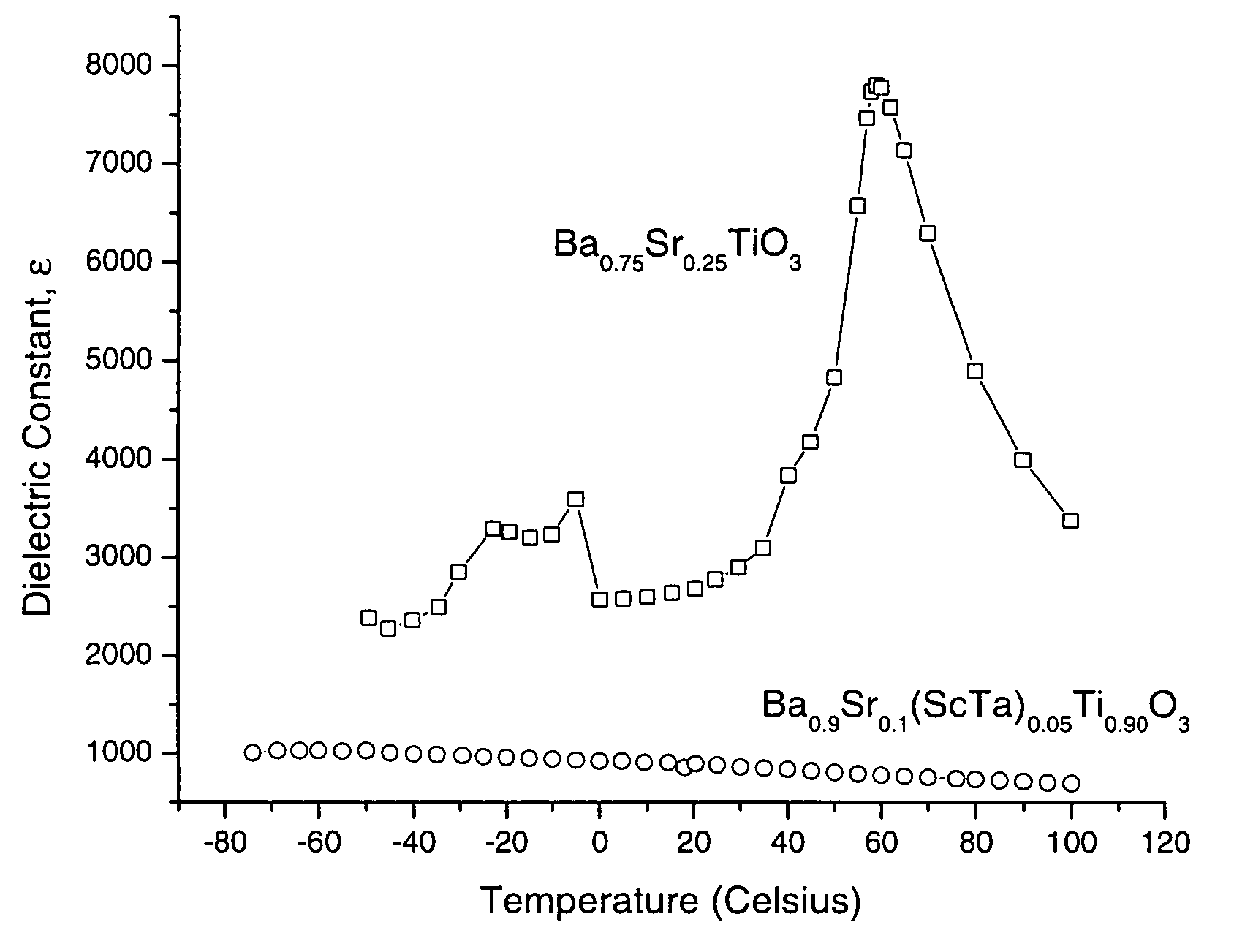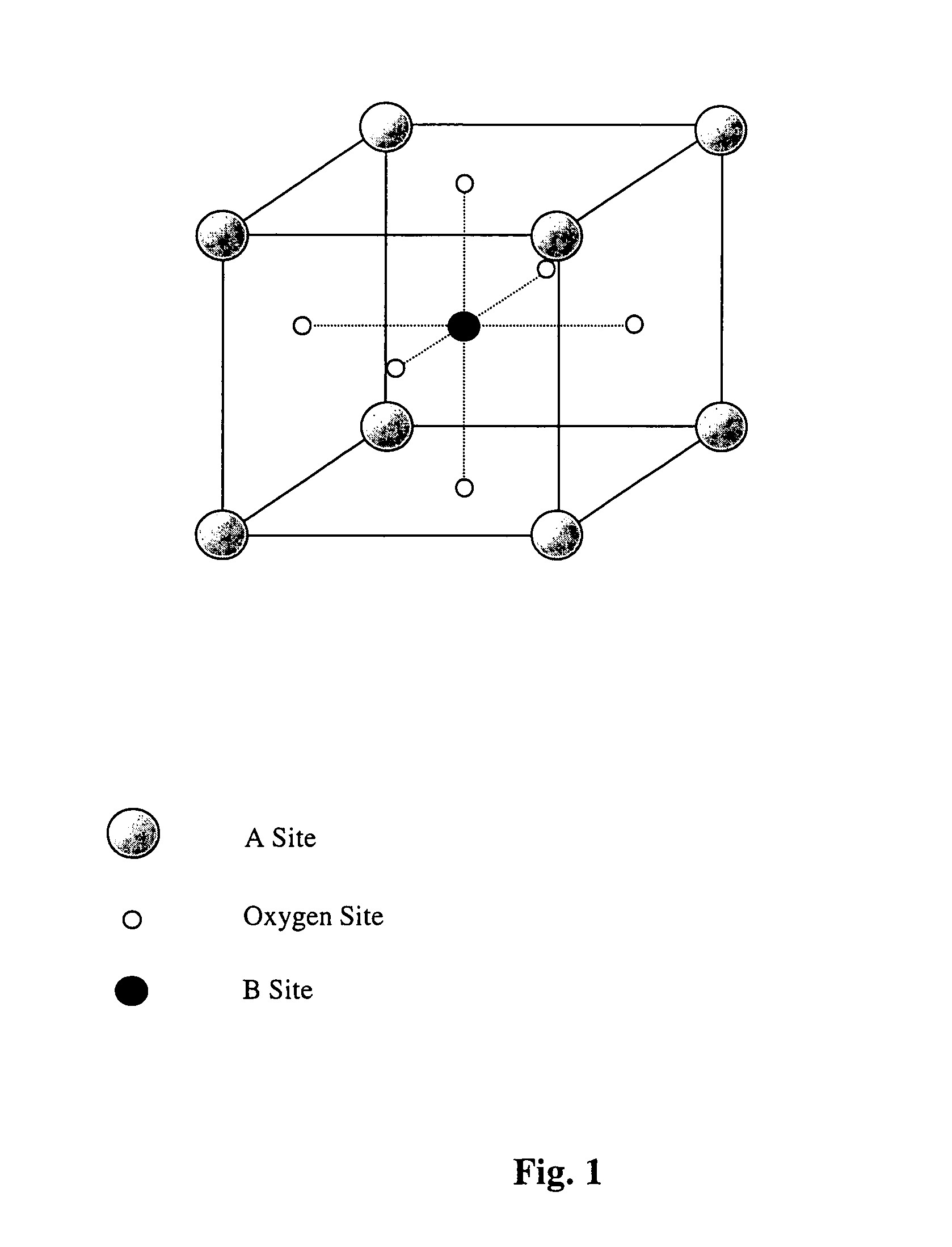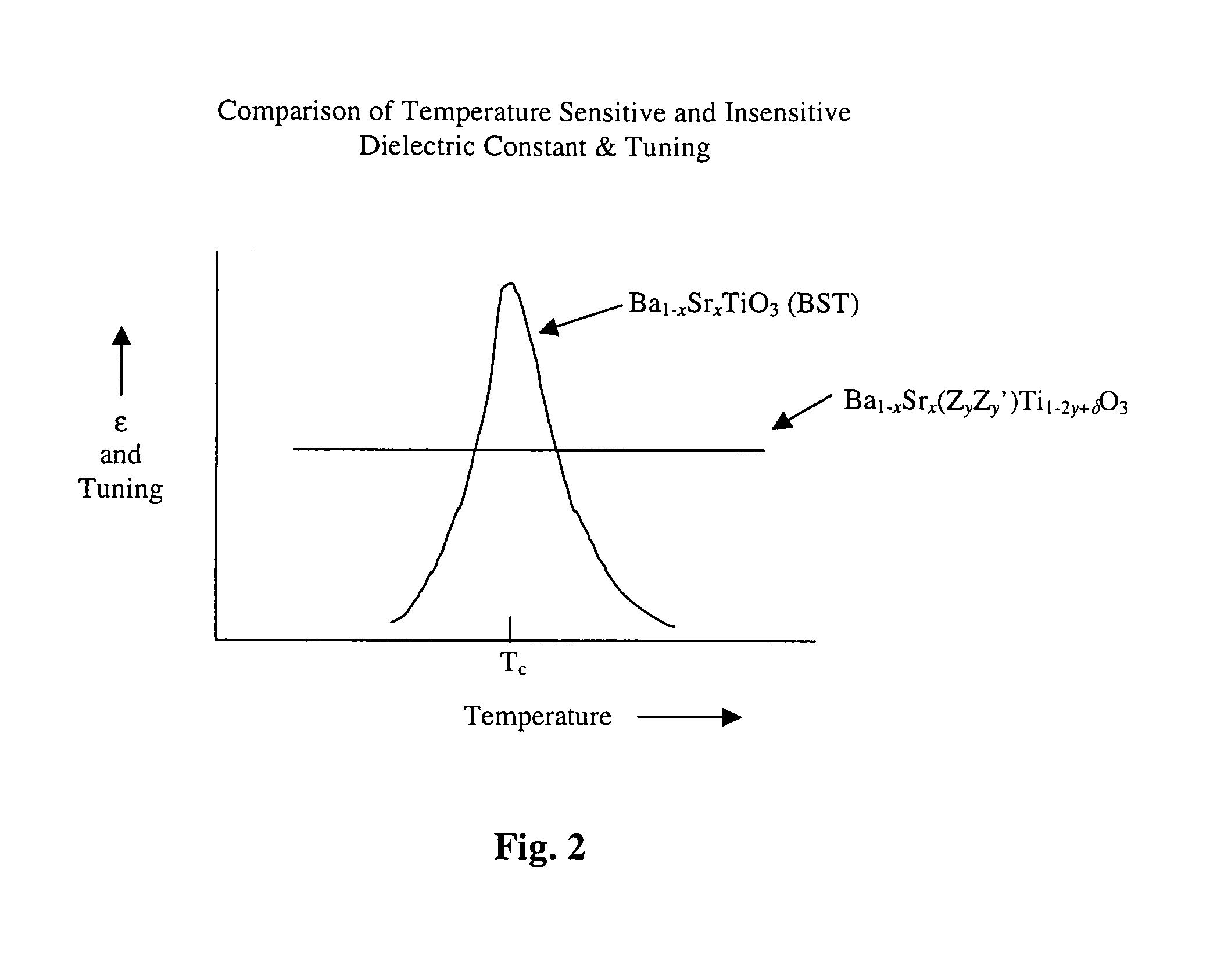Ferroelectric/paraelectric materials, and phase shifter devices, true time delay devices and the like containing same
a technology of phase shifter and material, applied in the direction of device material selection, basic electric elements, electrical apparatus, etc., can solve the problems of material limited use, t always dictate a decrease in phase shifter performance, and the above-mentioned technologies have disadvantages that must be overcome, so as to reduce the overall cost and size of the device, and simplify the electric control circuit. , the effect of reducing the overall cost and siz
- Summary
- Abstract
- Description
- Claims
- Application Information
AI Technical Summary
Benefits of technology
Problems solved by technology
Method used
Image
Examples
preparation examples
[0158]Charge-balanced compounds with the generalized formulas, Ba0.6Sr0.4Xy3+Zy5+Ti1-2yO3 and Ba0.6Sr0.4Xy4+Ti1-yO3, were synthesized along with a control sample of Ba0.6Sr0.4TiO3 (BST64). X3+, Z5+, and X4+ refer to the ions of the elements that are substituting for Ti. Goldschmidt's tolerance factor and the Clausius-Mossotti relation were used as guides in choosing substitution ions. Appropriate carbonates or oxides of the constituent elements, 99.9% pure or better, were combined by weight percent to obtain the proper charge compensation and stoichiometric contents, then mixed, ground, pressed (5 kPSI), and calcined at 1100° C. for over 8 hours. Samples were reground and then isostatically pressed at 50 kPSI followed by sintering between 1350° C. and 1550° C. for 22–70 h.
[0159]Density data shows ˜80–95% was the typical range of volume densities, and helium pycnometer measurements determined that the structural density is 97–99%. The compositions of the various samples prepared as d...
PUM
| Property | Measurement | Unit |
|---|---|---|
| dielectric constant | aaaaa | aaaaa |
| temperature operating | aaaaa | aaaaa |
| temperature | aaaaa | aaaaa |
Abstract
Description
Claims
Application Information
 Login to View More
Login to View More - R&D
- Intellectual Property
- Life Sciences
- Materials
- Tech Scout
- Unparalleled Data Quality
- Higher Quality Content
- 60% Fewer Hallucinations
Browse by: Latest US Patents, China's latest patents, Technical Efficacy Thesaurus, Application Domain, Technology Topic, Popular Technical Reports.
© 2025 PatSnap. All rights reserved.Legal|Privacy policy|Modern Slavery Act Transparency Statement|Sitemap|About US| Contact US: help@patsnap.com



